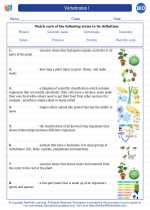Blizzards
A blizzard is a severe snowstorm characterized by strong winds, low temperatures, and poor visibility. Blizzards can be extremely dangerous and can cause major disruptions to transportation, communication, and daily life. Understanding the science behind blizzards can help us prepare for and respond to these natural disasters.
Formation of Blizzards
Blizzards typically form when a mass of cold, dense air from the Arctic region moves southward and meets warm, moist air from the Gulf of Mexico. As these air masses collide, the warm air is forced to rise rapidly, leading to the formation of dense clouds and heavy precipitation. The strong winds associated with the collision of these air masses can result in blizzard conditions.
Characteristics of Blizzards
Blizzards are characterized by several key features:
- Low temperatures: Blizzards are associated with frigid temperatures, often well below freezing.
- Heavy snowfall: During a blizzard, large amounts of snow can accumulate rapidly, leading to snowdrifts and reduced visibility.
- Strong winds: The winds in a blizzard can reach speeds of 35 miles per hour (56 kilometers per hour) or more, leading to blowing and drifting snow.
- Poor visibility: The combination of heavy snowfall and strong winds can reduce visibility to near-zero levels, making travel extremely hazardous.
Impact of Blizzards
Blizzards can have significant impacts on both the environment and human society. These impacts include:
- Transportation disruptions: Blizzards can lead to road closures, flight cancellations, and delays in public transportation.
- Power outages: High winds and heavy snow can damage power lines and result in widespread power outages.
- Health hazards: Exposure to extreme cold and snow can pose significant health risks, including hypothermia and frostbite.
- Economic losses: Blizzards can result in lost productivity, property damage, and increased costs for snow removal and emergency response.
Preparation and Safety
It is important to take proactive measures to prepare for blizzards and ensure personal safety. This includes:
- Creating an emergency kit: Stocking up on essentials such as food, water, medications, and flashlights can help you stay safe during a blizzard.
- Staying informed: Monitoring weather forecasts and alerts can help you make informed decisions about travel and outdoor activities.
- Limiting travel: If a blizzard is forecasted, it is best to avoid unnecessary travel and stay indoors until the storm passes.
- Dressing appropriately: Wearing layers of warm clothing and protecting exposed skin can help prevent cold-related illnesses.
Study Guide
To study the topic of blizzards, consider focusing on the following key areas:
- Understanding the atmospheric conditions that lead to the formation of blizzards.
- Identifying the characteristics of blizzards, including temperature, snowfall, winds, and visibility.
- Exploring the impacts of blizzards on transportation, infrastructure, and public health.
- Learning about preparedness and safety measures for dealing with blizzard conditions.
By mastering these concepts, you can develop a comprehensive understanding of blizzards and their effects, as well as the strategies for mitigating their impact on human society.
.◂Biology Worksheets and Study Guides High School. Vertebrates I
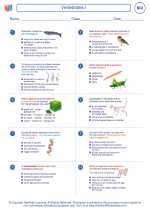
 Worksheet/Answer key
Worksheet/Answer key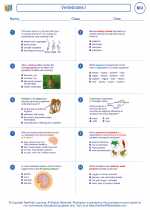
 Worksheet/Answer key
Worksheet/Answer key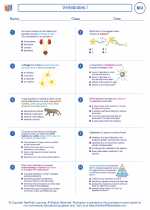
 Vocabulary/Answer key
Vocabulary/Answer key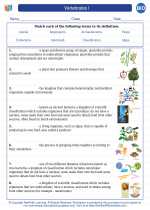
 Vocabulary/Answer key
Vocabulary/Answer key
 Vocabulary/Answer key
Vocabulary/Answer key